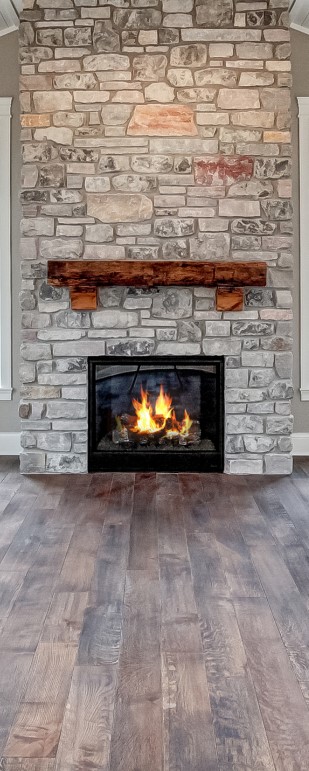
Tips for Minimizing Gaps in Your Wood Flooring this Winter
Now that the seasons are changing, homeowners may notice their wood flooring shrinking and causing gaps in between the floorboards. Even though this is a normal response to low moisture in the air, it’s not something that people like to see. Fortunately, there are a few things you can do to control winter-related shrinkage.
Why Does the Winter Cause Wood Floors to Contract?
Wood is a natural, living resource that contracts and expands as it releases and absorbs moisture from the air. When the air has low humidity levels, it causes the wood to lose moisture, too. The wood shrinks and leaves noticeable gaps in between the boards. In the summer, the wood releases moisture and expands.
If you notice that some parts of your floor are worse than others, this is perfectly normal. Typically, the closer you get to the heat source, the wider the gaps will be. The further away you get, the smaller the gaps will be. The good news is that unless the gaps are excessive, seasonal expansion and contraction is nothing to worry about.
Preventing Wood Floor Gaps in Winter
There are two main ways to deal with gaps in between the floorboards. The first has to do with increasing moisture in your home. The second has to do with the wood itself.
Maintain Humidity Levels
As you close the windows for the winter season, you’ll need to add a source of humidification to your home. Not only is this good for your floors but your health, too! Having well-balanced humidity improves indoor air quality and prevents dry, itchy skin.
To maintain humidity levels, here’s what to do.
- Reduce ventilation. The relationship between temperature, moisture and ventilation is what dries a house out in the wintertime. So, the more ventilation your home gets, the more winter air dries it out. A home energy audit can measure ventilation in the home. Usually, ventilation comes from leakage sites, such as windows and doors.
- Add moisture. The colder the air, the more moisture is needed. Moisture is created from normal household activities, such as cooking and taking showers. If this isn’t enough, you can install a humidifier, which can be standalone or attached to your furnace. To prevent gaping, keep humidity levels around 35 to 40 relative humidity (RH).
Making Your Wood Flooring Work for You
If you already have wood flooring installed, you can’t really work backwards. But, if you are considering upgrading some other rooms in your home, keep these tips in mind.
- Install quality flooring. The quality of the wood makes a difference. This is an investment in your home, so opt for narrower boards and stable species of domestic wood. Wider boards and exotics are more prone to shrinking.
- Choose products made for low RH environments. Solid wood flooring has been used in these environments for years. Still, it pays to do your research. Choose a flooring that can handle your normal, local environment.
- Accept seasonal gaps. Wood is wood. As long as it’s not excessive, it’s normal to see gaps in between the floorboards. Before long, the temperatures will warm up and the floor will expand again. When having any flooring installed, speak with the installer and establish proper expectations.
If you notice your wood flooring contracting with the cold weather, it’s probably nothing to worry about. Wood is a living, breathing thing, and it expands and contracts when the temperature changes. If you have any other hesitations or concerns, call us!
Photo credit to Dingman Custom Homes
*Disclaimer:
The information presented on musolfs.com is compiled from reliable sources.
That said, as a consumer, your main source of information regarding your hardwood floor should be your professional flooring installer.
Each home and installation project is unique and comes with its own set of considerations.
We are happy to present general information and tips here and hope that you find this helpful.
